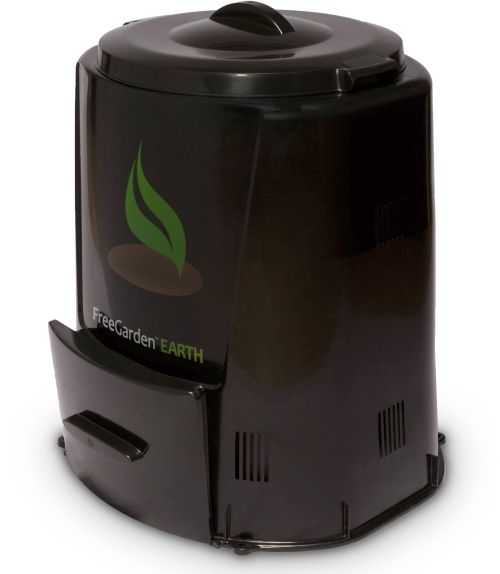 Composting is the natural decomposition of organic material into humus, which is a rich, natural soil. Backyard home compost improves your soil quality by providing important nutrients, and helps retain moisture which will improve plant health. Composting in your backyard diverts organic materials from the landfill. It's good for your plants and it can save you money by reducing the need for fertilizer.
Composting is the natural decomposition of organic material into humus, which is a rich, natural soil. Backyard home compost improves your soil quality by providing important nutrients, and helps retain moisture which will improve plant health. Composting in your backyard diverts organic materials from the landfill. It's good for your plants and it can save you money by reducing the need for fertilizer.
Backyard composter subsidy program for Thunder Bay residents
City residents can purchase a backyard composter at EcoSuperior, 562 Red River Rd, for only $45. Cash, cheque or debit are accepted. Make sure to have proof of address (any ID card or document with name and address). EcoSuperior will include all the information you need to get started. See EcoSuperior's Composter webpage.
Benefits of backyard home composting
- Backyard composting decreases the amount of garbage you put out for curbside collection, which reduces municipal collection and disposal costs.
- Landfills are designed to keep air and moisture out, which are necessary for decomposition. When organics break down in landfill conditions, they produce methane gas and leachate - so, putting less organic waste into your household trash will prolong the life of the landfill.
- Compost is a valuable end-product that improves soil and plant health, prevents erosion, retains moisture, and replenishes nutrients in soil. This reduces the need to water gardens and eliminates the need to purchase other fertilizers.
- Backyard compost is FREE!
What can and can't go into your backyard composter?
The “recipe” for successful composting is a ratio between “brown” carbon sources and “green” nitrogen sources. Remember: the smaller the particles, the quicker they will break down, so be sure to chop up larger scraps such as corn cobs before placing them in your backyard composter.
Browns are yard wastes including dried leaves, wood chips or shavings, straw, dried cut grass, and weeds before they go to seed.
Greens are kitchen scraps such as fruit & vegetable peels and cores, egg shells, coffee grounds & filters, tea bags, and cut flowers.
Do not compost these items in your backyard composter: meat, bones, dairy products, cooking oil, rhubarb leaves, human or pet wastes, charcoal, or inorganic materials such as plastics.
Let's get started!
You can compost in your backyard a bin or a pile. Bins help keep the compost neatly contained and can keep animals out. You can purchase a backyard composter bin (see Thunder Bay's subsidy program at the top of the page) or build your own from wood or wire mesh.
The best place for your backyard composter is in a convenient, sunny location on level ground with adequate drainage.
Place a layer of sticks at the bottom of your backyard composter to keep the pile aerated, and then alternate layers between browns and greens. Avoid adding thick layers of any one type of waste.
The process requires moisture and oxygen, so it’s important to keep your pile moist and turn it regularly with a shovel or pitchfork. For finished composter sooner, stir it as often as every three to five days. Otherwise, turning every couple of weeks in warm weather will be sufficient.
Under good conditions, backyard composting can produce finished compost in as little as six months! Even if you don't take layer browns and greens or turn the pile very often, you will still get compost within two years if you make sure there's enough moisture. You can continue adding to your composter throughout the winter—the material won’t decay until spring, but the freeze/thaw cycles make it break down quickly once spring arrives. When temperatures warm, just add a shovelful of dirt or dried leaves and give it a good mixing.
How to use your finished compost
Finished backyard compost should feel like a wrung-out sponge. When you squeeze a handful of it, just a couple drops of liquid should come out. It should be a dark brown colour, and have a pleasant earthy smell.
Wait until the pile is fully inactive before using the compost. The microbial activity generates heat, so when finished, the centre of the pile should no longer feel hot.
You can mix finished backyard compost with garden soil to use in a flower or vegetable garden, or spread finished compost on your lawn as a top dressing. It may be helpful if you screen out larger items that have not broken down (twigs, etc.) and return them to the pile.
| Troubleshooting tips |
Too dry/wet:
Odours/animals/pest prevention:
|
| How to rodent-proof your backyard composter |
|
Contact Us








